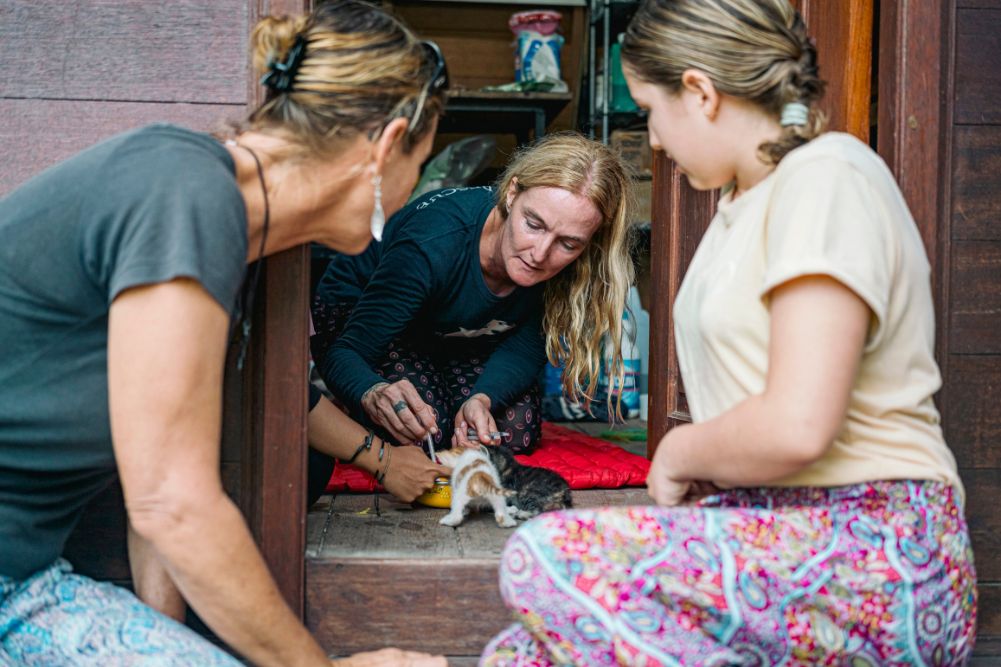10 tips to get you started with solar power
Whereas once solar energy was largely for off-grid homes, today the primary motivation is often economic. In Australia, both South Australia and Queensland lead on a per-capita basis. More than 1.5 million homes and business have installed panels on their roofs, with a capacity of 4.8 Gigawatts (GW), representing more than 2.5 per cent of national generation. Following accelerated growth between 2011 and 2013, industry expansion has slowed down slightly over the last few years, but we still have the world’s greatest concentration of rooftop PV systems.
For New Zealand, the Tasman and Marlborough regions are the standout leaders in per-capita installations. About 8400 systems have been wired up, representing less than 0.1 per cent of the country’s electricity production. In recent years, New Zealand has been seeing exponential growth from a very small base, with installed capacity roughly doubling every 12 months.
Solar benefits
The range of motives for going solar include wanting to help the environment via non-polluting electricity generation. This is far more of an issue in Australia than in New Zealand where about 80 per cent of power comes from renewable sources.
Other householders want to save on their electricity bills. After doubling between 2007 and 2014, Australia’s electricity prices have levelled off but are now the fourth highest in the world. In New Zealand, bills are continuing to rise.
System prices vary a fair amount and bargains are liable to mean poorer-quality panels, less attention to detail and inferior installations, including a lack of corrosion protection.
Some are drawn to solar by a sense of self-reliance and independence and this group is likely to be attracted to battery options that have recently appeared on the market. A similar priority is the desire to avoid polluting fossil-fuelled transport by running an electric car charged from the roof.
On the downside, the manufacture of solar panels typically uses greenhouse gases with a high global-warming potential (perfluorocarbons, nitrogen trifluoride and sulphur hexafluoride.) Production energy use is high and toxic chemical hazards in the workplace need to be managed. Embodied energy associated with manufacture and installation is typically offset within 0.7–2 years, compared to the 30-year expected lifetime of a panel.
Roof angle & direction
Panels will need to be free from shade for most of the day and ideally face north but if your roof lacks a north-facing aspect, don’t despair. Solar panels on east- or west-facing roofs lead to a drop in production of roughly 15 per cent but this loss is most easily offset by adding an extra panel. Some people choose a west orientation because they are interested in optimising generation later in the day after they return from work.
Ideally, the best angle for panels is the angle of latitude minus 10 degrees. Where roofs are facing east or west or are too flat, mounting frames can be used to tilt the panels in a more desirable direction. Frames are likely to take a few years to pay themselves off.
Economics
Solar is a long-term investment that assumes you’ll be occupying the Home for years to come or using a solar system as a selling point when it comes time to move. It has a higher yield than term deposits and is safer than shares. At the same time, a good suggestion is to initially prioritise cheaper energy efficiency expenditures that pay themselves back faster. These include swapping incandescent and halogen globes for LEDs, switching to water-efficient showerheads, installing ceiling insulation and replacing old, inefficient appliances with others that have top energy star ratings.
Over the past few years, the cost of solar PV systems has been on a steep downward curve. Australia saw an 80 per cent drop from 2009 to 2014. While the average cost of a system varies by state, the average is about AUD $3100 (1.5kW) and AUD $6700 (5kW.) In New Zealand, solar prices fell by 75 per cent between 2009 and 2015. A system there is significantly pricier than in Australia, averaging NZD $6000 (1.5kW) and NZD $16,000 (5kW.) System prices vary a fair amount and bargains are liable to mean poorer quality panels, less attention to detail and inferior installations, including a lack of corrosion protection.
Australian government rebates to encourage solar PV uptake are largely limited to Small-scale Technology Certificates that can be sold to recoup part of the system cost. For a 2kW system, these are worth around AUD $1200–$1500, depending on whether an agent is used. Adelaide City Council also offers rebates of up to AUD $5000 on residential and commercial systems. New Zealand has no equivalent financial incentives.
In Australia, the financial payback period varies across climatic zones, from about four years in the Northern Territory to about 11 years in Tasmania. For New Zealand it’s roughly 10 years.
Two alternatives to outright purchase are known as solar leasing and power purchase agreements. Zero-upfront-cost options are available from a range of companies, which retain ownership of the panels as payments are made and are responsible for maintenance. This arrangement works best if in-home electricity usage is high, but obtaining a loan and buying outright is probably preferable where possible. As usual, look carefully at the contract.
Inverters & feed-in-tariffs
Every grid-connected solar installation requires an inverter. These convert generated DC current into usable AC and are rated according to their capacity. One Australian company named Tindo Solar offers a special type of micro-inverter rated to match an individual panel or a pair of panels. For other inverters, system performance is limited by the deficiencies of the weakest panel but the Tindo system allows each panel to operate independently.
Metering works so that solar power generated is first consumed in the house and any excess is typically exported to the grid. At times of day when the panels are not generating, power is sourced from the grid.
This brings up the issue of the feed-in tariff (FiT), a payment for power fed to the grid. A “gross” FiT is one where power is fed back for a retail-equivalent price, the equivalent of the meter running backwards. In Australia and New Zealand, this is only available in the Northern Territory. Elsewhere, there are “net” FiTs in operation.
From a recent high point of up to 60c/kWh, most of Australia’s FiTs have fallen dramatically to far below the peak retail cost, the exception being the Northern Territory. Switching power companies can yield a better FiT.
As a consequence of the drop in FiTs, most households going solar are now looking to match system size to usage based on their recent electricity bills. Another tip is to run units such as pool pumps and heat pump water heaters off rooftop solar by adjusting the timers to operate during the maximum sun period.
Solar politics
In a complex transition, centralised power generation and distribution is being disrupted by a rival decentralised model. Overinvestment in Australia’s poles-and-lines network during the late 2000s and early 2010s, known as “gold-plating”, may result in unused assets.
There are a number of ways in which solar users are being disadvantaged, in subtle or not-so-subtle ways. Some network and electricity companies that have been leaking revenue have been trying to recoup it via what are dubbed “solar taxes”. These have been introduced in Spain and Arizona and also by the New Zealand network company Unison for solar grid-exporters in the Taupo and Rotorua area. Moves to introduce them in Australia have so far been unsuccessful.
Proposals have been made in Australia to restructure bills to tilt the playing field against solar users, who would pay higher network charges. Sometimes solar owners are knocked back from discounts available to other customers. Following a directive by the Australian Energy Regulator in late 2015, solar customers are now required to pay their own meter charges, which were previously shared by all energy consumers, but fortunately these only amount to about $7 per quarter.
The battery option
Even more disruptive to the traditional network model are storage batteries. These were traditionally of the clunky lead-acid variety and intended for houses with no grid connection.
Everything changed in April 2015, when Tesla made headlines with its Powerwall battery. Sleek and sexy, this unit can easily be attached to the wall of a garage. It is based on lithium-ion technology, with a 6.4kWh capacity, and requires a solar PV system of at least 4kW plus a new inverter. With Australia’s average daily electricity consumption being 18kWh per day and New Zealand averaging 22kWh per day, multiple units will probably be needed unless the household is frugal. A battery enables exiting the grid, storing all of the power generated, postponing power usage to a lower-tariff time of day (load-shifting) and keeping the lights on during power cuts.
A battery enables exiting the grid, storing all of the power generated, postponing power usage to a lower-tariff time of day (load-shifting) and keeping the lights on during power cuts.
Choice in Australia has estimated a cost of at least AUD $12,000 (with existing solar) or AUD $14,000 (without solar.) Payback periods are long and likely to be well in excess of the 10-year warranty. While the economic case fails to stack up the moment, prices are likely to drop significantly over the next few years. While no figures are available for New Zealand, they are likely to be broadly similar.
A major environmental side-effect from most lithium-ion batteries is linked to the use of rare-earth elements. Radioactive thorium produced during refinement of rare earths is a major disposal headache with a half-life of 14 billion years. The world capital of rare-earth production is the Chinese city of Baotou, which has created a vast tailings pond full of toxic and radioactive dark sludge.
Several other companies have entered the battery market in this region including AGL (Power Advantage), Redflow, Enphase, Panasonic and Daimler. Of these, Redflow uses a zinc bromide liquid and is rare-earth free.
The biggest problem for network companies is that, as they raise their costs, increasing numbers of solar users will be motivated to jump ship and avoid them by going down the battery route. For those who like the best of both worlds, another option is a hybrid system that combines both battery storage and grid export functions.
Taking the plunge
When going down the solar route, write down what you’re hoping to achieve and talk to a few different companies. Here is a short checklist of the steps:
- When choosing an installer, look at how long they have been around, and their experience, especially with your type of system. The Clean Energy Council has a list of approved installers.
- It’s important to have a site visit so that the solar company can look at your roof.
- Ask whether you can choose the type of meter and consider avoiding a smart meter (also known as an “advanced meter”) for a range of reasons including radiation risks.
- A range of different solar calculators is available online, some of which compute an estimated payback period.
- The ideal system size can be arrived at by looking at electricity bills and estimating or determining the time of usage. Each 1kW of capacity generates 3.5–5kWh per day in Australia depending on the climate, and 2.5–5kWh in New Zealand. Unless definitely going down the battery route, there is no incentive to choose a larger system than one intended to match home usage in real time.
- Read the fine print of a contract and be prepared to obtain legal advice if necessary before signing.
- In Australia only: Organise the Small-scale Technology Certificates paperwork or assign an agent to do this.
- Make an application to connect to the grid.
- Remember to keep records regarding the installation safe with the system manual.
- Keep up with maintenance, which involves paying for scheduled cleaning and regular checks.








